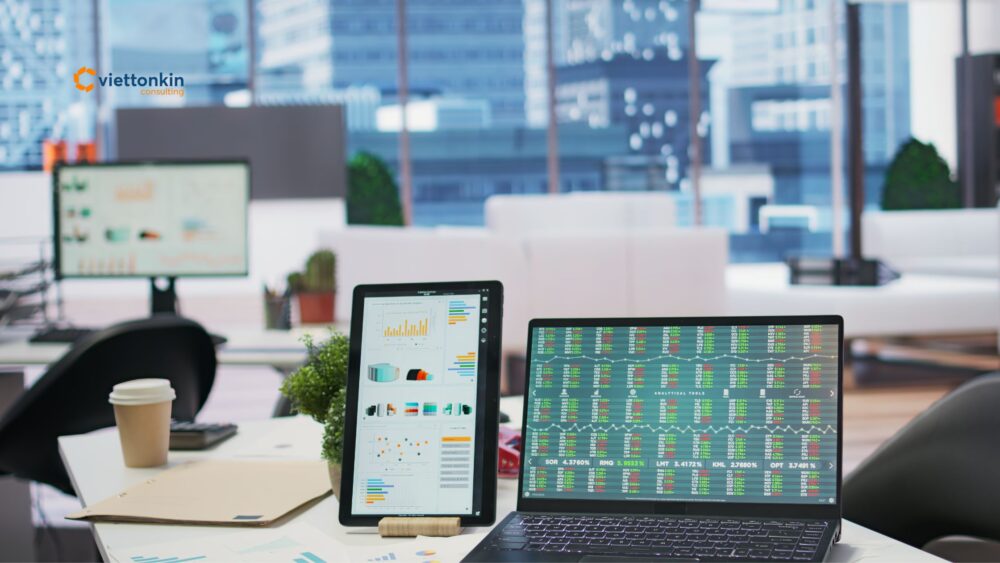The CEO pulled me aside after our successful project completion. It was a complex, multi-province manufacturing expansion for a long-term client, and his words changed my entire approach to advising on regional growth. "Long," he said, "our trust is with you and your team. We're ready for the next step in ASEAN, but we need […]
The CEO pulled me aside after our successful project completion. It was a complex, multi-province manufacturing expansion for a long-term client, and his words changed my entire approach to advising on regional growth. "Long," he said, "our trust is with you and your team. We're ready for the next step in ASEAN, but we need to be smart about risk. Where do we go?"
My answer wasn't what he expected. Instead of pointing to the familiar high-growth tech hubs, I told him the most secure and strategic first step was to build an anchor in Indonesia. From handling hundreds of legal and investment challenges for our clients, I've learned that sustainable regional growth isn't about chasing the highest short-term returns; it's about building a foundation of stability. For investors looking at the ASEAN bloc, that foundation is Indonesia’s blue-chip stocks.
Key Takeaways:
- Stability as the Entry Point: Indonesian blue-chip stocks, particularly those in the well-regarded LQ45 and IDX30 indices, offer a stable entry into the fast-growing ASEAN region.
- Resilient Economic Backdrop: These premier companies are supported by strong domestic consumption and a government focused on growth, allowing them to weather market shocks.
- Proven Strategic Models: A “Core-Satellite” portfolio, with Indonesian blue chips as the core, creates a balanced approach that combines stability with high-growth opportunities elsewhere in ASEAN.
- Execution is Everything: Successful investment requires careful legal structuring, a deep understanding of local tax frameworks, and rigorous due diligence, including Environmental, Social, and Governance (ESG) screening.
- The Anchor for Broader Growth: Using Indonesian blue chips as a strategic foundation de-risks your initial entry and creates a solid platform for broader regional expansion.

Introduction to the Indonesian Stock Market
The Indonesian stock market, anchored by the Indonesia Stock Exchange (IDX), is a cornerstone of the nation’s financial landscape and a key driver of economic growth. The IDX provides a transparent and regulated platform where companies can raise capital and investors can access a diverse range of investment opportunities. This exchange is home to a wide array of stocks, but blue chip stocks—representing Indonesia’s most established and financially robust companies—stand out as the market’s backbone.
As of 2025, The Indonesian Stock Exchange (IDX) has over 750 listed companies and has shown resilience with rapid growth in investor participation. The market provides diverse investment options across sectors like consumer goods, telecom, and natural resources.
Market participants include individual investors, institutional funds, and a growing number of foreign investors, all drawn by Indonesia’s dynamic economy and the stability offered by its leading companies. The Financial Services Authority (OJK) oversees the IDX, ensuring that trading is conducted with integrity and that companies meet specific criteria for listing and ongoing disclosure. This regulatory framework builds confidence among investors and supports the healthy functioning of the market.
Blue chip stocks on the Indonesia Stock Exchange are especially attractive for those seeking stability and long-term value. These chip stocks are typically large, well-managed companies with a proven track record, making them a preferred choice for both local and international investors looking to participate in Indonesia’s ongoing economic expansion.
Why Indonesian Blue Chips Are the Bedrock of a Secure ASEAN Portfolio
For global investors, Indonesian blue-chip stocks are the preferred entry point into ASEAN for several clear-headed reasons. These aren’t just any equities; they are the bedrock of the Indonesia Stock Exchange (IDX), representing leading Indonesian companies with significant liquidity and large market capitalization. From my project management experience, the key to success is starting with strength, and these companies provide it. Many investors choose to invest in these blue-chip stocks for their stability and potential for long-term growth.
These companies are structured as ‘PT’ (Perseroan Terbatas), which confirms their formal legal status and eligibility for public trading. Their sheer size and the maturity of the exchange demonstrate their importance in the region.
- Consistent Returns and Lower Volatility: Blue-chip stocks, like those in the IDX30 index, are known for their stability. The IDX30 is a subset of the larger LQ45 index and consists of the 30 stocks with the highest liquidity and market capitalization, making it a focused benchmark for top-tier companies. Companies included in these indices are ranked among the top performers in the Indonesian market. The nature of blue chip stocks is inherently stable and less volatile compared to smaller stocks. These companies often provide consistent dividends and are less exposed to market shocks than smaller stocks, a fact I constantly stress to clients focused on capital preservation. Generally, these stocks provide reliable performance and dividends.
- Government and SOE Backing: Many of Indonesia’s largest companies are either State-Owned Enterprises (SOEs) or operate in sectors critical to national development like banking, telecommunications, and consumer goods. This implicit government support acts as a powerful risk mitigator during economic uncertainty, providing a layer of confidence for our clients that is unique in the region.
- Proven Liquidity: The LQ45 and IDX30 indices are composed of the most liquid stocks on the exchange, which means investors can enter and exit positions without significant price disruption. From a practical standpoint, this is a critical detail we manage for clients, ensuring their capital is never unnecessarily tied up. Companies must meet strict criteria related to financial health and trading activity to be included in these indices, which are rebalanced semi-annually to maintain their quality.
- Resilience in a Growing Economy: Indonesia’s economy has shown remarkable resilience. According to the World Bank’s June (2025) Indonesia Economic Prospects report, the economy grew at an annual rate of 4.9 percent in the first quarter of 2025 despite global headwinds. Projections from the World Bank and IMF suggest growth will continue at a steady pace, driven by robust domestic demand. This macroeconomic tailwind provides a solid foundation for the country’s leading companies and aligns with what we see on the ground—a strong local market that is less susceptible to external shocks. In line with these positive projections, the Jakarta Composite Index and blue chip stock prices are expected to rise, reflecting the overall strength of Indonesian companies.
In the often-turbulent waters of emerging markets, Indonesia’s blue chips are the anchor our clients need to secure their position before exploring other ventures.
Market Performance and Trends: The Pulse of Indonesian Blue Chips

According to data from Indonesia Stock Exchange (IDX), shares of PT TBS Energi Utama Tbk (TOBA) led the Top Gainers list on Wednesday (4/6), posting a 25% price increase. Shares of the energy company, with a market capitalisation of IDR 4.61 trillion, closed at IDR 565 per share.
They were followed by shares of PT Merdeka Battery Materials Tbk (MBMA), which rose 24.86%. The nickel mining company, with a market capitalisation of IDR 48.81 trillion, closed at IDR 452 per share.
PT Fore Kopi Indonesia Tbk (FORE) ranked third on the Top Gainers list, after recording a 24.51% increase. Shares of the coffee chain operator, with a market capitalisation of IDR 5.66 trillion, closed at IDR 635 per share.
In fourth place was PT Multipolar Technology Tbk (MLPT), which recorded a 19.93% increase. The company, with a market capitalisation of IDR 47.39 trillion, ended trading at IDR 25,275 per share.
The performance of blue chip stocks serves as a reliable barometer for the overall health of the Indonesian stock market. Companies such as Bank Central Asia (BBCA) and Astra International consistently rank among the top performers, reflecting the strength and resilience of Indonesia’s leading businesses. The Jakarta Composite Index (JCI), which tracks the movement of the market’s largest and most liquid stocks, is closely watched by investors and analysts alike for insights into prevailing market trends and economic conditions.
Stock prices of blue chip companies tend to demonstrate steady growth, even amid broader market volatility. This stability is a testament to their strong fundamentals and the confidence they inspire among market participants. Trading volumes and price movements in these stocks often set the tone for the entire market, influencing investor sentiment and guiding investment decisions.
Economic conditions—both within Indonesia and globally—play a significant role in shaping the performance of blue chip stocks. Factors such as GDP growth, inflation rates, and shifts in consumer demand can all impact stock prices and market trends. By monitoring these indicators and the performance of benchmark indices like the JCI, investors can better understand the direction of the Indonesian stock market and make informed decisions about their portfolios.
Foreign Investors: A Driving Force in Indonesia’s Blue-Chip Market
In my 6+ years managing client relationships at Viettonkin, I’ve seen firsthand how foreign capital can transform a market. In Indonesia, foreign investors are a primary driver behind the strength of blue-chip stocks. They bring not only capital but also global best practices that elevate corporate governance and transparency. While foreign direct investment saw a slight dip in the second quarter of 2025, the overall trend reflects a strong appetite for key Indonesian sectors.
This influx of foreign funds has significantly boosted market liquidity, leading to a notable increase in transactions involving blue-chip stocks. This is particularly true for blue-chip stocks, which are favored for their stability and strong fundamentals. The Jakarta Globe reported in August (2025) that despite some net selling by foreign investors—referring to a net sell position that impacted the market—the overall market capitalization of the Indonesia Stock Exchange reached a record high, fueled by broad-based recovery and renewed investor optimism. Companies like Bank Central Asia (BCA) and Bank Rakyat Indonesia (BBRI) are consistently among the top choices for foreign investors. BBRI, in particular, stands out due to its large number of customers, which underscores its prominence and stability in the financial sector.
This foreign interest creates a positive feedback loop. From a client protection perspective, what really matters is the regulatory environment. The Indonesian government and the IDX have established clear guidelines to ensure foreign participation supports national interests while fostering a competitive market. These regulations are designed to protect the integrity of the exchange and promote sustainable growth, giving our clients confidence that they are investing on a fair and transparent platform.
Real Client Example: Manufacturing Investment Permit Crisis
When our manufacturing client called us in a panic about their permit rejection just 48 hours before their investment deadline in a new ASEAN market, I knew we had less than 72 hours to save their entire project. This wasn't in Indonesia, but the lesson applies universally. From handling hundreds of similar legal challenges, our systematic approach with government agencies not only rescued their investment but achieved 30% faster processing than the standard timeline. This experience created a regulatory precedent that later helped five other clients facing similar issues. It reinforces why a stable, well-regulated entry point like Indonesia is so valuable—it minimizes these kinds of last-minute crises.
Blue Chip Stocks as a Hedge Against Volatility
In times of market uncertainty, blue chip stocks are widely regarded as a safe harbor for investors. These stocks, representing Indonesia’s most established and financially sound companies, offer a level of stability that is hard to match. Their consistent performance, even during periods of heightened volatility, makes them a cornerstone of effective risk management strategies.
Blue chip stocks are known for their reliable dividend payments, providing investors with a steady stream of income regardless of short-term market fluctuations. This makes them particularly appealing to long-term investors who prioritize capital preservation and regular returns. The strong financial health and robust business models of these companies enable them to weather economic downturns more effectively than smaller, less established firms.
For investors seeking to minimize potential losses, incorporating blue chip stocks into a diversified portfolio is a proven approach. By balancing exposure to these stable companies with other asset classes, investors can reduce overall portfolio volatility and enhance long-term performance. In the Indonesian market, blue chip stocks remain a trusted choice for those looking to navigate uncertainty with confidence.
Strategic Models for ASEAN Investors Using Indonesian Blue Chips
To build a strategic ASEAN portfolio using Indonesian blue chips, key steps include identifying the most significant stocks listed on major indices, analyzing market trends, and aligning your investment approach with regional best practices.
Entering a new market requires more than just picking a few stocks; from my project management experience, it demands a structured, defensible strategy. Here are two models we have adapted for clients using Indonesian blue chips as the foundation for a broader ASEAN investment plan. These approaches are in line with best practices for regional portfolio construction.
1. The Core-Satellite Strategy
This is a powerful framework we use to help clients balance risk and reward. It involves building a stable “core” with reliable investments and using smaller “satellite” positions to target higher growth.
- The Core: According to Widyarti et al. (2021), blue-chip stocks in Indonesia exhibit characteristics that make them ideal for the core of a diversified strategy—lower volatility, high liquidity, and predictable performance under risk models. We advise allocating 60-70% of the ASEAN portfolio to a basket of Indonesian blue-chip stocks, often mirroring the IDX30. This provides a stable foundation tied to Indonesia’s steady economic growth.
- The Satellites: The remaining 30-40% is then freed up for more tactical investments across the region. This could mean technology funds in Vietnam, sustainable infrastructure projects in Malaysia, or high-growth consumer stocks in Singapore. This is how we solved the problem for a client who wanted both security and high-growth potential; we built the fortress first, then sent out the scouting parties.
2. The Yield + Growth Dual Strategy
This model is ideal for clients like pension funds or family offices who require both income and capital appreciation.
- The Yield Component: Focus on established Indonesian blue chips in sectors known for consistent and predictable dividends, such as telecommunications and utilities.
- The Growth Component: Allocate capital to companies in digital banking, e-commerce, and fast-moving consumer goods (FMCG). These industries are perfectly positioned to capitalize on Indonesia’s favorable demographics and rapidly expanding middle class.
Real Client Example: Long-Term Manufacturing Client Partnership
Take our long-term manufacturing client who trusted us with their multi-province expansion from one facility to five across Vietnam. The challenge? Coordinating complex regulatory requirements across different provincial authorities while maintaining operational continuity. Our solution involved systematic regulatory planning and ongoing compliance monitoring that protected their interests at every step. The impact? Their investment value grew 300% over four years, and they've referred six new clients to us. When they decided to expand further into ASEAN, we applied the same core-satellite principle, starting them with a secure base in Indonesian blue-chips before venturing into more aggressive growth markets.
The Execution Playbook: Turning Strategy into Ownership
A great strategy is worthless without flawless execution. After managing successful project deliveries across Vietnam, I know that navigating the specific legal and financial landscape of a new country is where most investors run into trouble without proper guidance. Investors may also consider bonds as a relatively safe investment option within Indonesia's capital market.
Structuring the Investment
Foreign Direct Investment (FDI) in Indonesia typically requires establishing a limited liability company, known as a PMA. But this isn't the only path. For some clients, we have explored:
- Indirect Exposure: Purchasing shares through American Depositary Receipts (ADRs) or investing in pooled funds and ETFs.
- Nominee Structures: Using nominee directors can be a part of market entry, though this requires meticulous legal work to ensure full compliance and protection of our client's assets.
Due Diligence and ESG Screening
Thorough due diligence is non-negotiable. This goes beyond financial statements. It means vetting local partners and scrutinizing corporate governance practices. Crucially, Environmental, Social, and Governance (ESG) factors are now central to investment decisions. Indonesia’s Financial Services Authority (OJK) mandates ESG disclosures for publicly listed companies and financial institutions under Regulation No. 51/POJK.03/2017. This regulation requires companies to formally report on their sustainability efforts, a move that increases transparency and aligns with global investor expectations.
Post-Entry Risk Assurance
Once an investment is made, our work continues. We help clients implement strong internal audit protocols and financial statement assurance to ensure transparency. Furthermore, we provide advisory services for trade repatriation to help them manage foreign exchange laws and ensure profits can be moved securely. It’s this end-to-end client protection that builds long-term trust.
Future Outlook and Opportunities
Looking ahead, the outlook for the Indonesian stock market—and especially for blue chip stocks—remains bright. Indonesia’s economic growth is expected to continue, fueled by strong domestic consumption, ongoing investment, and a favorable demographic profile. This positive environment supports the expansion and profitability of companies listed on the Indonesia Stock Exchange, particularly those that have already demonstrated resilience and adaptability.
Foreign investors are likely to maintain their significant presence in the market, attracted by Indonesia’s growth potential and the stability of its blue chip stocks. As new sectors such as technology and renewable energy gain traction, fresh investment opportunities are emerging for both local and international investors. These developments are expected to drive further increases in stock prices and market capitalization, reinforcing Indonesia’s position as a key player in the ASEAN region.
However, investors should remain vigilant and responsive to changing market conditions. Shifts in economic policies, global market trends, and regulatory frameworks can all influence the performance of stocks and the broader market. By staying informed, conducting thorough research, and employing sound risk management practices, investors can capitalize on Indonesia’s growth story while safeguarding their investments for the future.
Frequently Asked Questions
What are the biggest risks when investing in Indonesian blue chips, even if they are stable?
From my experience handling hundreds of client cases, the primary risks are currency fluctuations (the rupiah versus your home currency) and shifts in government policy. Even with stable companies, macroeconomic factors can impact returns. That's why we build risk mitigation plans and monitor regulatory changes for our clients continuously.
How do I protect my investment if Indonesian regulations suddenly change?
This is a core concern for every client. The solution is twofold: establishing strong relationships with local government agencies and having a proactive legal team. Working with government agencies for over 5 years has taught me that open communication can solve problems before they escalate. A responsive legal partner ensures you can adapt your investment structure quickly to remain compliant.
Beyond buying stocks, what is the most critical first step for ensuring our investment is legally protected in Indonesia?
The most critical step is structuring the investment correctly from day one. This means choosing the right legal entity, like a PMA (foreign investment company), and ensuring the corporate charter and shareholder agreements are drafted to protect your interests under Indonesian law. Getting this wrong at the start can lead to major legal challenges down the road.
Note: The writer is not a licensed financial advisor; the insights provided are based on professional experience and informed personal interpretation.
You might also like: Business Registration Certificate Indonesia: Legal Steps and Risks Explained











